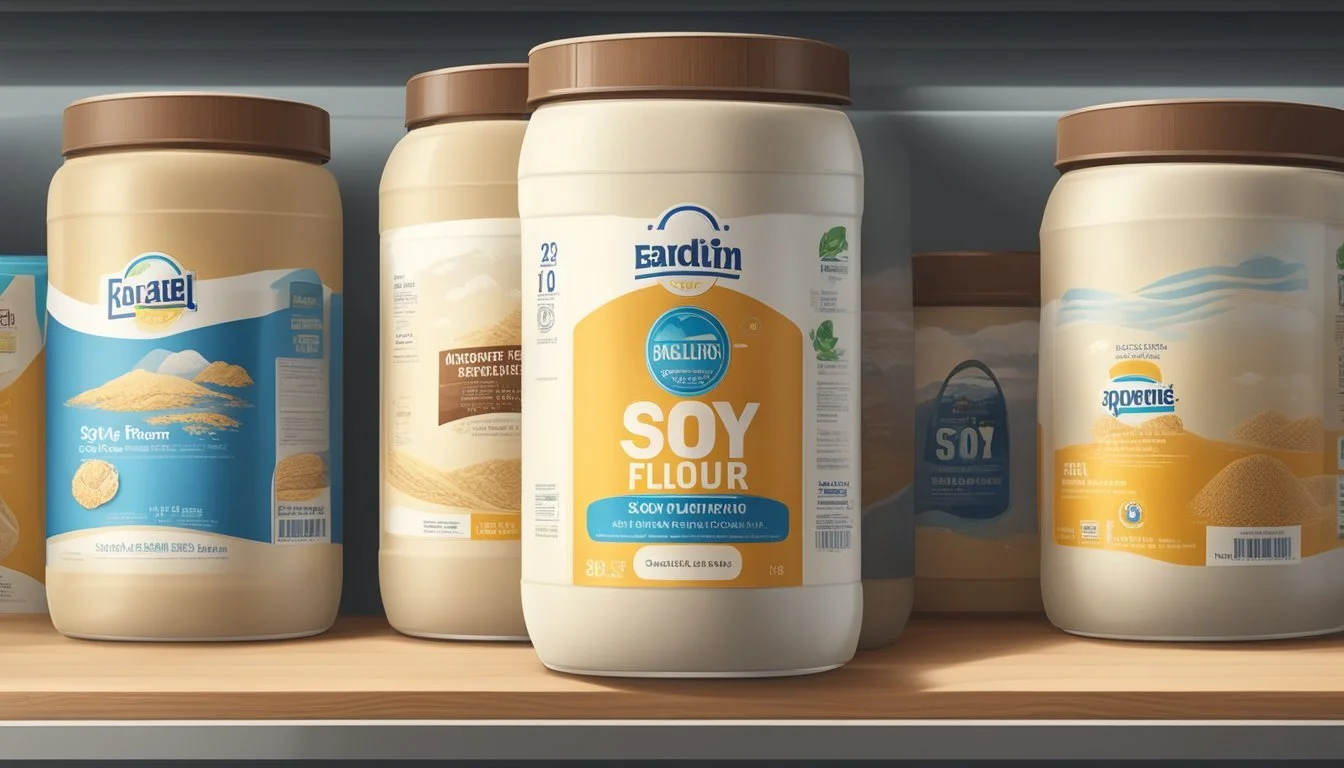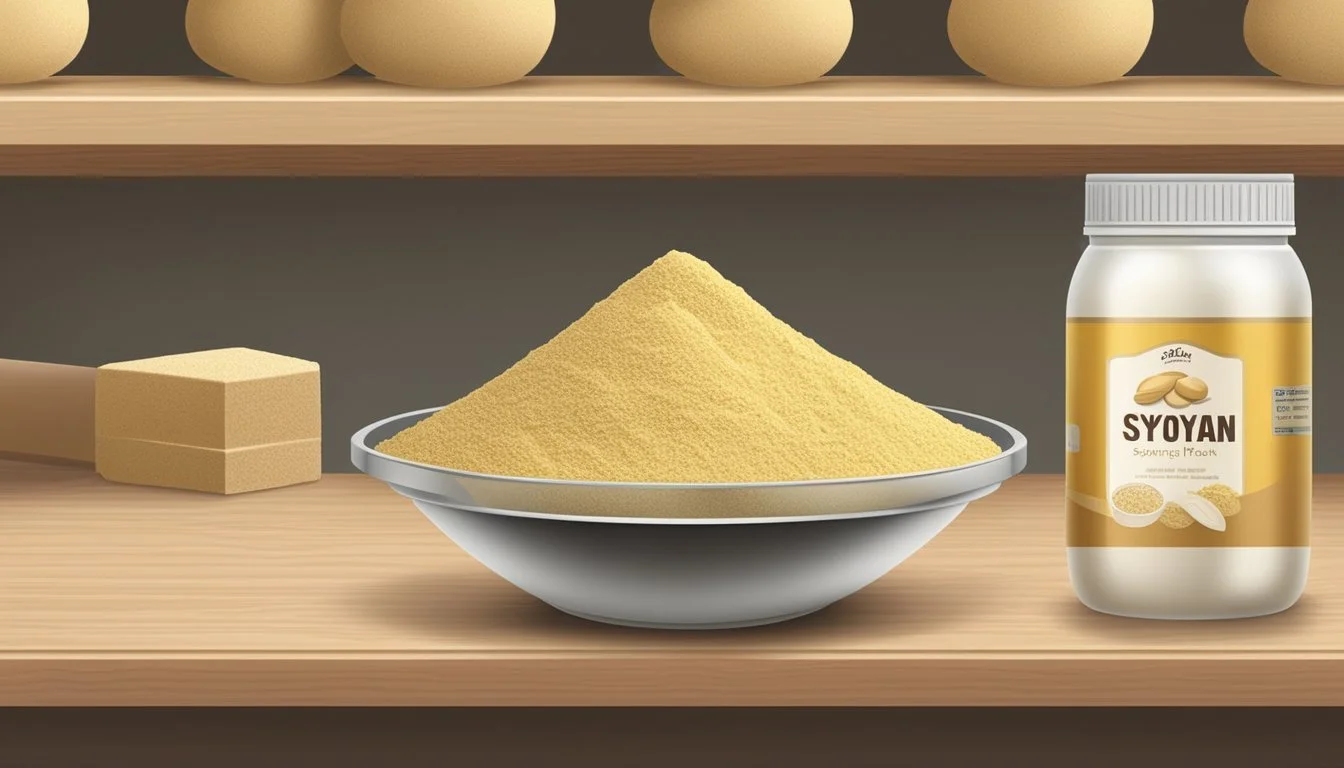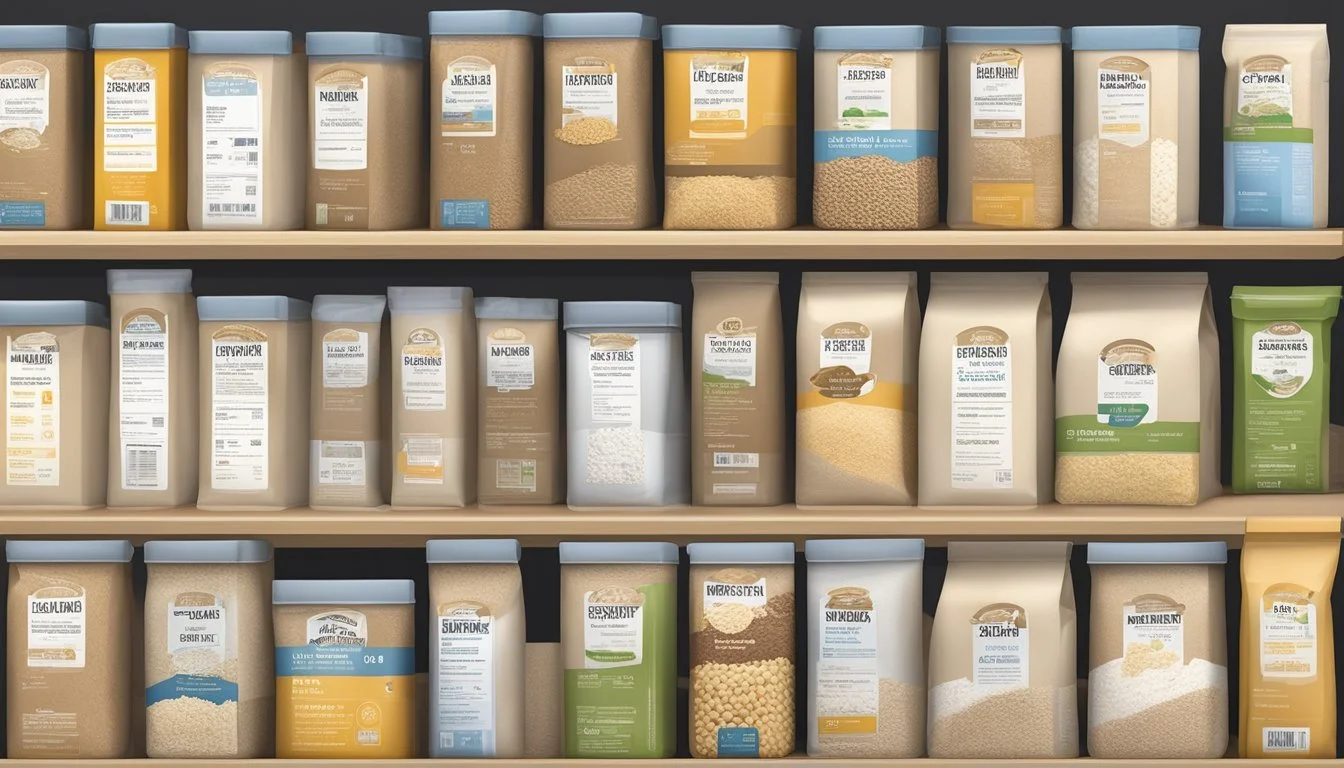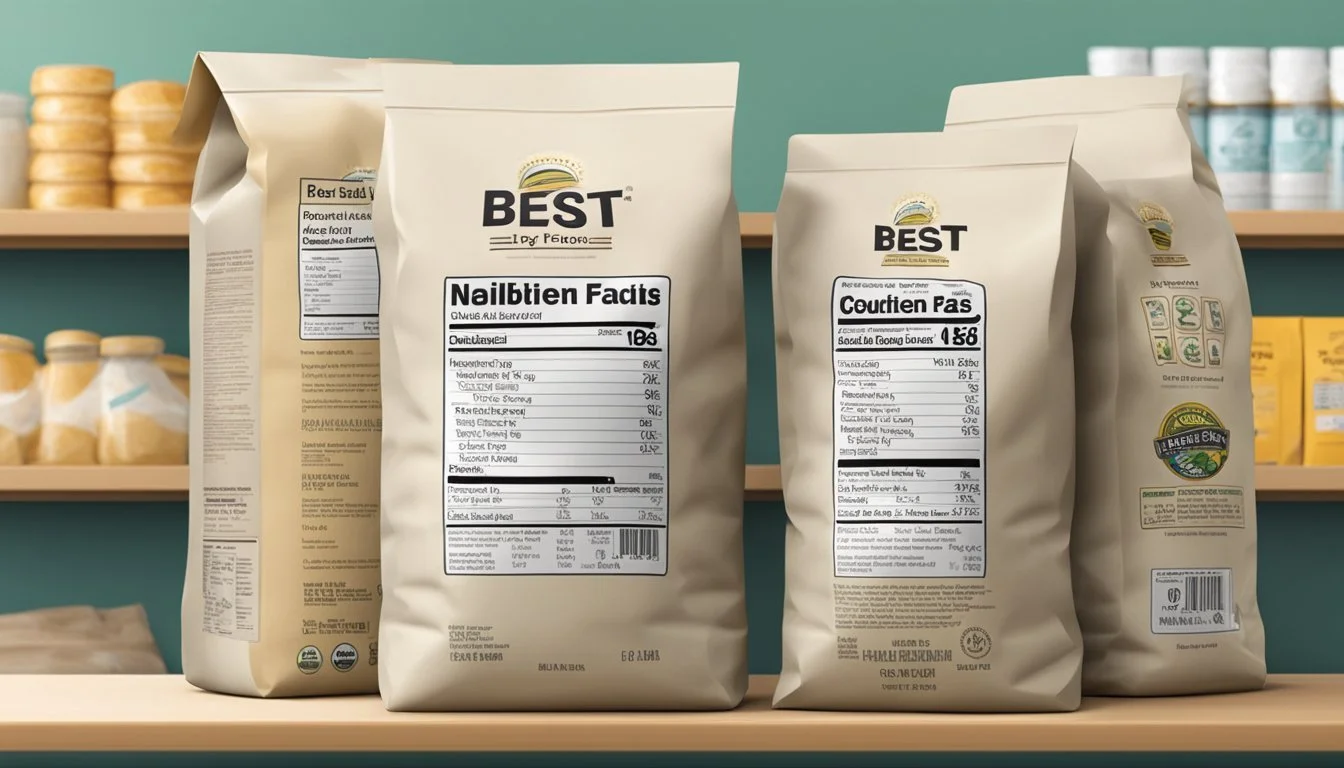Does Soybean Flour Go Bad?
Storage Tips and Shelf Life Insights
Soy flour, like any other flour, has a finite shelf life and can go bad over time. Soybean flour often goes bad if it's left out for prolonged periods or exposed to moisture or pests. The initial signs are usually a strong, rancid smell and potential changes in color or texture. When soy flour is fresh, it typically has a neutral smell and consistent texture.
Proper storage is crucial in maintaining the quality of soy flour. To prolong its shelf life, it should be kept in an airtight container in a cool, dry place. If stored correctly, soy flour can last several months without losing its quality, but it's essential to be vigilant for any signs of spoilage.
Spoiled soy flour can impact the quality of your recipes, resulting in undesirable flavors and possible health risks. By regularly checking for a rancid smell, unusual spots, or clumping, you can ensure that your soy flour remains in good condition and safe for use in your culinary creations.
Understanding Flour Basics
Flour, a staple in baking, comes in various forms and compositions, each with unique properties and applications. Soybean flour, specifically, has a distinct nutritional profile that sets it apart from other common flours.
Types of Flour Used in Baking
Baking employs multiple types of flour, each contributing differently to texture, taste, and nutritional value. All-purpose flour is widely used due to its balanced protein content, making it versatile for many recipes. Cake flour has a lower protein content, ideal for soft, tender baked goods. Whole wheat flour includes the bran, germ, and endosperm, offering a denser texture and higher fiber content. Gluten-free flours, made from grains like rice or nut flours like almond, cater to those with gluten intolerance. Nut flours add richness and a distinct flavor. Each type plays a specific role in achieving the desired outcome in baking.
Composition of Soybean Flour
Soybean flour stands out due to its nutritional benefits. It is high in protein, containing all nine essential amino acids, making it a complete protein source. The flour also boasts a rich fiber content, aiding digestion and promoting fullness. Made from ground, defatted soybeans, it includes significant amounts of B vitamins, such as thiamin and riboflavin. The lower fat content compared to full-fat soy flour makes it a healthier option. Soybean flour improves the texture and chewiness of baked goods, adding a subtle nutty flavor. Understanding its composition helps in utilizing its unique properties effectively in culinary applications.
Signs of Spoilage and Quality Deterioration
Soybean flour is susceptible to spoilage, which can affect its safety and quality. Identifying rancid smells, the presence of mold, changes in texture, and off-putting flavors are crucial for determining if your soybean flour is still good to use.
Identifying Rancidity in Soybean Flour
Rancidity is a primary indicator of spoilage. Soybean flour contains oils that can degrade over time, leading to a rancid odor. This rancid scent is usually sour or musty. Fresh soybean flour should have a neutral, slightly nutty smell. The presence of an off odor signals spoilage and potential degradation of quality and safety, making the flour unsafe for consumption.
Mold and Unusual Changes in Appearance
The appearance of mold in soybean flour signifies contamination. Mold can produce mycotoxins, harmful substances that pose serious health risks.
Symptoms of mold contamination include:
Green, blue, or black spots
Fuzzy growths
Discoloration
If any of these signs are present, the flour should be discarded immediately to prevent food safety dangers.
Changes in Texture and Consistency
Changes in texture are another important indicator of spoilage. Fresh soybean flour has a fine, powdery consistency. Spoiled flour may develop clumps due to moisture exposure or oil separation. Clumps indicate the loss of freshness and the onset of quality deterioration. The presence of these symptoms should prompt disposal as it affects both taste and safety.
Off-Putting Smells and Flavors
Spoiled soybean flour will have off-putting smells and flavors. An unpleasant taste, often bitter or sour, is a sign that the flour is no longer fresh. These changes in flavor can ruin recipes and indicate that the flour is not fit for consumption. Always check for any off flavors before using to ensure food safety and quality.
Optimal Storage Solutions for Soy Flour Shelf Life
Properly storing soy flour can significantly extend its shelf life. The main factors to consider are temperature, moisture, and container type to keep the flour fresh and safe for consumption.
Pantry Storage Techniques
Soy flour can be stored in a pantry, but certain precautions should be taken. Store soy flour in an airtight container to protect it from moisture and pests. Choose a cool and dry place, away from direct sunlight.
Temperature is crucial; too much heat can cause the flour to spoil faster. Ideal storage temperatures are between 50°F and 70°F (10°C to 21°C).
Label the container with the purchase date to keep track of its age. Typically, soy flour can last 3-6 months in the pantry under optimal conditions.
Refrigeration and Freezer Guidelines
For markedly longer shelf life, refrigeration or freezing is recommended. In the fridge, soy flour can last up to a year. Store it in an airtight container to prevent it from absorbing odors and moisture from other foods.
Freezing soy flour offers the longest shelf life, extending it beyond a year. Use resealable bags or containers that are both airtight.
When freezing, label and date the container. Before using frozen soy flour, let it warm to room temperature to avoid moisture condensation inside the container.
Suitable Containers for Prolonged Freshness
Using the right containers is critical for prolonging the freshness of soy flour. Airtight containers are a must to keep out moisture and pests. For pantry storage, use opaque containers to minimize light exposure.
Glass jars with tight-fitting lids, plastic containers designed for food storage, and resealable plastic bags are all suitable options. For extended storage in the freezer or fridge, mylar bags with oxygen absorbers provide excellent protection against oxidation and moisture.
Regularly inspect the container for any signs of wear or damage that could compromise its airtight seal. Proper containers ensure that soy flour retains its quality and extends its shelf life considerably.
The Impact of Shelf Life on Baking Performance
The shelf life of soybean flour can significantly influence the baking results, affecting both the quality and safety of the recipes. Ensuring the flour's freshness preserves taste and texture, while compromised flour often leads to subpar and potentially unsafe outcomes.
Role of Fresh Flour in Baking Quality
Fresh soybean flour plays a crucial role in achieving high-quality baked goods.
Ingredients that have not aged or spoiled ensure consistent texture and flavor in products like cakes, cookies, and bread. Fresh flour helps baked items rise properly and avoid undesirable flavors, contributing to a pleasant overall taste experience.
Using dry, well-preserved flour supports the oven's performance, allowing cakes and cookies to develop the right structure.
For instance, pie crusts made with fresh flour will be flaky and tender, rather than dense or tough.
Keeping flour in an airtight container away from moisture and heat extends its usability, maintaining the desired qualities in baked goods.
Effect of Compromised Flour on Recipes
When soybean flour exceeds its shelf life, the quality of bakery items suffers.
Old or spoiled flour can introduce off-flavors that overpower the intended taste of cookies or pastries, leading to an unpleasant eating experience. The texture of recipes can become inconsistent, often resulting in flat cakes or dense bread that fails to rise correctly in the oven.
Moreover, compromised flour may contain harmful molds or bacteria, posing health risks such as foodborne illnesses. Bakers should discard flour showing signs of spoilage, including clumping or a rancid smell.
To avoid these pitfalls, regularly checking expiration dates and properly storing flour are essential practices for maintaining both the safety and quality of baked goods.
Labeling and Regulation of Flour Shelf Life
Flour products, including soybean flour, have various expiration date labels that indicate their freshness and safety. These labels and the guidelines set by the FDA and USDA ensure consumers get the best quality while reducing health risks.
Understanding Expiration Date Labels
Flour packages often display expiration dates, best-by dates, or sell-by dates. These labels help consumers know how long the product will maintain its prime quality. An expiration date indicates when the product should no longer be used, while a best-by date suggests the time frame for peak flavor and quality.
White flour and self-rising flour generally display these labels prominently. Proper storage of flour by keeping it in a cool, dry place can prolong its freshness past the listed dates. Expired flour might not only lose its quality but can also pose health risks if used beyond its shelf life.
A simple label checklist:
Expiration Date: Should not be used after this date.
Best-By Date: Optimal freshness and quality time frame.
Sell-By Date: Guarantee of best quality by this date for retail.
FDA and USDA Guidelines on Flour Safety
The FDA and USDA provide guidelines to ensure flour safety and quality. These guidelines include proper labeling, storage recommendations, and consumer education about shelf life. Following these guidelines minimizes the risk of contamination and spoilage.
Nutritionists and food safety experts recommend storing flour in airtight containers to protect it from moisture and pests. Specific recommendations from these agencies help manufacturers set accurate expiration and best-by dates to maintain food safety standards.
Regulatory bodies also mandate that manufacturers clearly list these dates to assist consumers in making informed choices. Regularly checking the integrity of the packaging and adherence to these guidelines provides an added layer of safety and quality assurance.
By staying informed and complying with these expert recommendations, consumers can ensure their flour remains safe and fresh for consumption.
Preventing Waste and Hazardous Consumption
Proper management of soybean flour ensures not only its effective use but also safety and minimal waste. Awareness of flour’s condition post-best-by date and safe disposal methods are key aspects.
Identifying Usable Soy Flour Post-Best-by Date
Soybean flour can still be safe to use past its best-by date if stored properly. Check for any unusual odors. Fresh soy flour typically has a mild, nutty aroma. A rancid, sour, or musty smell indicates spoilage.
Inspect the flour's appearance. Clumping or discoloration usually signifies moisture exposure, leading to spoilage. Ensure no visible signs of mold before using it.
Taste a small amount. If it tastes bitter or off, it should not be used. Proper storage in an airtight container, ideally in a fridge or freezer, can extend its shelf life and maintain quality.
Safe Disposal of Spoiled Flour
Proper disposal of spoiled soybean flour helps prevent potential hazards. Avoid dumping it directly into the trash, as it can attract pests. Instead, seal it in a plastic bag or container before discarding.
For environmentally conscious disposal, consider composting the spoiled flour. Ensure it’s free from chemicals or additives, making it suitable for composting.
Label and separate bad flour from other waste to avoid accidental consumption. Awareness and proper disposal methods contribute to better waste management and food safety practices.
Special Considerations for Soy Flour
Soy flour offers unique nutritional benefits and can be a great addition to special diets and gluten-free baking. It is a versatile ingredient capable of boosting protein content and adding a unique flavor to various recipes.
Nutritional Benefits of Soy Flour
Soy flour is recognized for its high protein content, making it a valuable ingredient for those seeking to increase their protein intake. One cup of soy flour contains approximately 17 grams of protein. This is significantly higher than that of traditional whole grain flours.
In addition to protein, soy flour is rich in essential amino acids, iron, and B vitamins. These nutrients are crucial for maintaining energy levels and overall health.
Defatted soy flour, which has had most of its fat removed, offers a lighter texture and fewer calories, while still providing substantial protein benefits.
Fiber content is another highlight, aiding in digestion and contributing to a feeling of fullness, which can be helpful for weight management.
Usage in Special Diets and Gluten-Free Baking
Soy flour is a popular choice in gluten-free baking, providing a nutrient-dense alternative to other gluten-free flours such as almond flour, tapioca flour, and coconut flour.
In gluten-free recipes, soy flour helps improve texture and moisture retention. This makes it a reliable binding agent, which is critical in the absence of gluten.
Those following a vegan diet will find soy flour beneficial due to its plant-based protein, which can complement or replace animal-derived proteins.
Given its nutritional profile, incorporating soy flour can enhance the dietary value of recipes, making it suitable not only for those with gluten intolerance but also for anyone seeking a healthier flour option.








